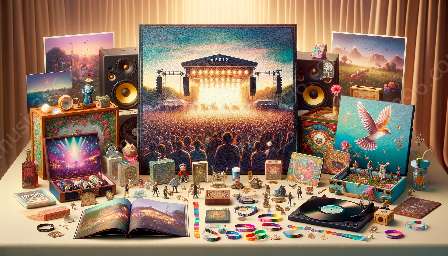Music memorabilia holds immense value, both sentimental and historical, and it is important to understand the environmental considerations in preserving and displaying these precious artifacts. In this comprehensive guide, we will explore the best practices for music memorabilia storage and display, as well as the impact of environmental factors on the preservation of music art and memorabilia.
Importance of Environmental Considerations
Music memorabilia encompasses a wide range of items, including instruments, stage costumes, posters, records, and more. These items often hold cultural and historical significance, making it crucial to protect them from environmental harm. Whether you are a collector, a curator, or a musician looking to preserve your own legacy, understanding the environmental considerations in caring for music memorabilia is essential.
Environmental Factors Affecting Music Memorabilia
Various environmental factors can affect the preservation of music memorabilia. These factors include:
- Temperature and Humidity: Fluctuations in temperature and humidity can cause damage to materials such as paper, fabric, and wood. Exposure to extreme heat or cold, as well as high levels of humidity, can lead to warping, mold growth, and deterioration of organic materials.
- Light: Exposure to light, especially ultraviolet (UV) rays, can cause fading and deterioration of colors in posters, photographs, and textiles. Direct sunlight should be avoided when displaying music memorabilia to prevent damage from UV radiation.
- Air Quality: Poor air quality, including pollutants and airborne particles, can accelerate the degradation of materials such as leather, textiles, and paper. Proper ventilation and air filtration are essential in preserving music memorabilia.
- Storage Materials: The materials used for storage, such as archival boxes, acid-free tissue paper, and inert plastics, play a crucial role in preventing deterioration and chemical reactions that can harm music memorabilia.
Preserving Music Memorabilia
Preserving music memorabilia begins with understanding the best practices for storage and display. Here are some tips:
Storage:
- Use acid-free and lignin-free storage materials to prevent acid migration and deterioration of paper-based items.
- Maintain a stable environment with controlled temperature and humidity to prevent physical and chemical damage.
- Store items in dark or opaque containers to protect them from light exposure.
- Regularly inspect stored items for signs of deterioration or pest infestations.
Display:
- Choose display cases or frames with UV-protective glazing to minimize light exposure.
- Avoid placing memorabilia near sources of heat or direct sunlight.
- Rotate displayed items periodically to minimize light damage and stress on materials.
- Use mounts and supports designed for specific types of memorabilia to prevent strain and distortion.
Best Practices for Displaying Music Art and Memorabilia
Displaying music art and memorabilia requires careful consideration to ensure both preservation and aesthetic appeal. Here are some best practices:
Organize and Group Items:
Arrange items by theme, era, or artist to create visually appealing displays that also tell a story. Consider using labels or captions to provide context for the displayed items.
Controlled Lighting:
Utilize adjustable lighting that can be tailored to the specific needs of different types of memorabilia. LED lighting options can provide flexibility and energy efficiency while minimizing UV emissions.
Secure Mounting and Framing:
When framing or mounting items, use archival-quality materials and techniques to ensure the stability and preservation of the memorabilia. Consider the weight and fragility of items when choosing mounting methods.
Interactive Displays:
For interactive displays, such as playable instruments or touch-screen interfaces, take measures to protect the items from excessive handling and physical wear. Consider providing instructions for appropriate interaction with the displayed items.
Conclusion
Preserving and displaying music memorabilia is an art in itself, requiring a delicate balance between protection and presentation. By understanding the environmental considerations and adhering to best practices for storage and display, collectors, curators, and enthusiasts can ensure that music art and memorabilia are appreciated for generations to come.























